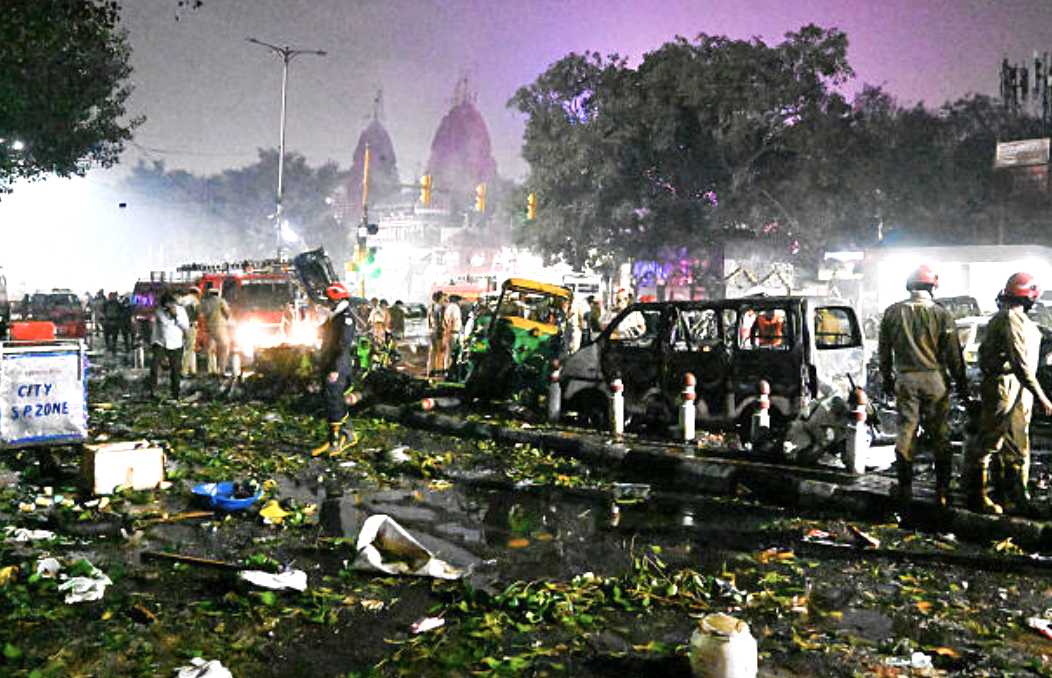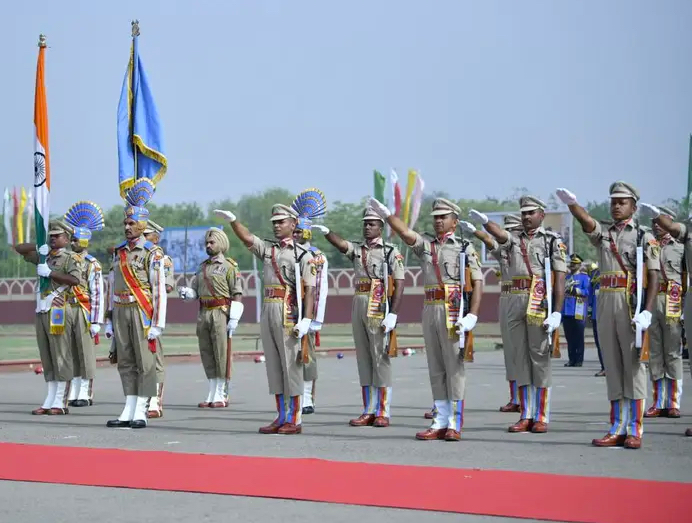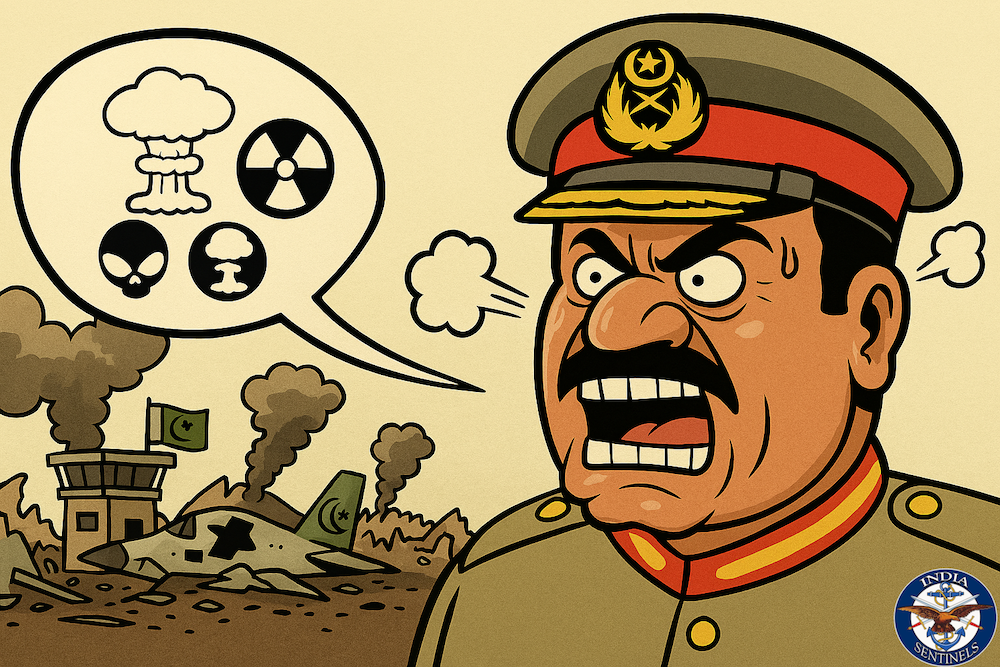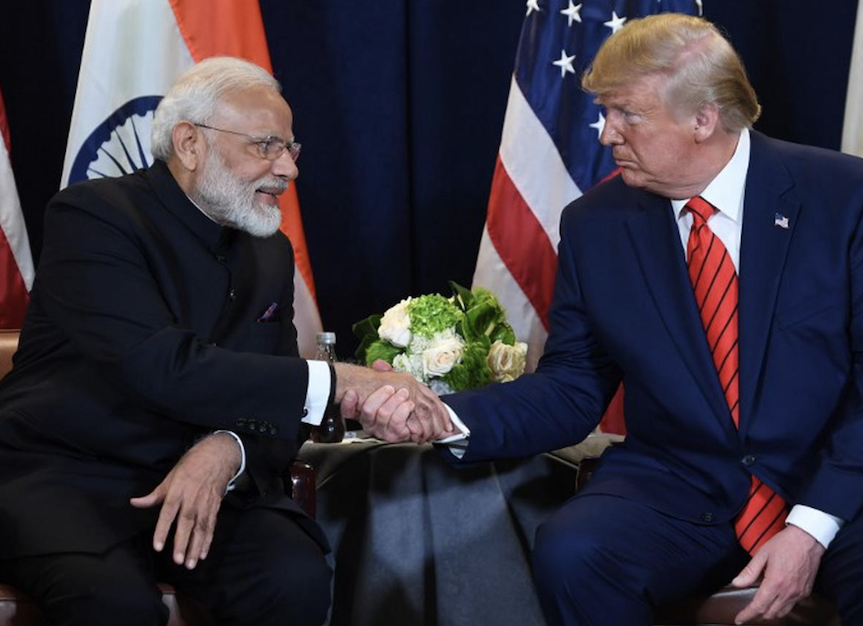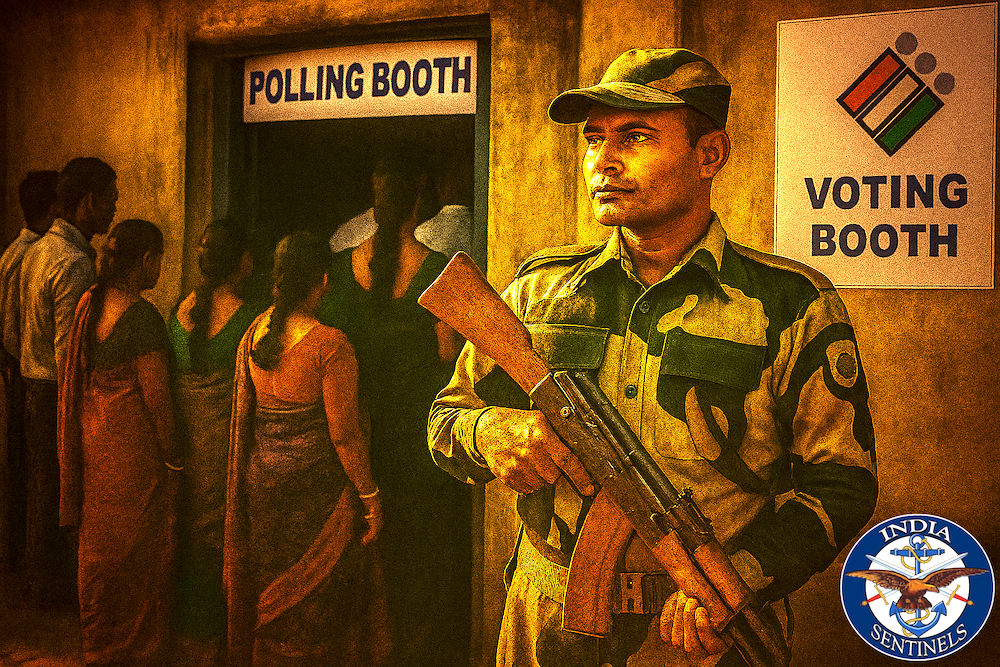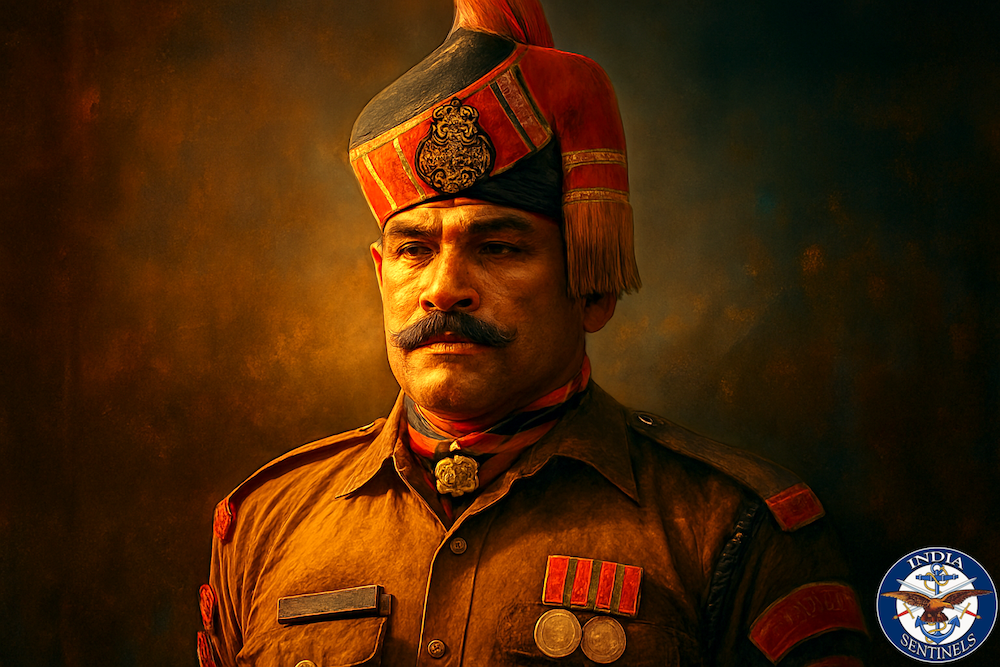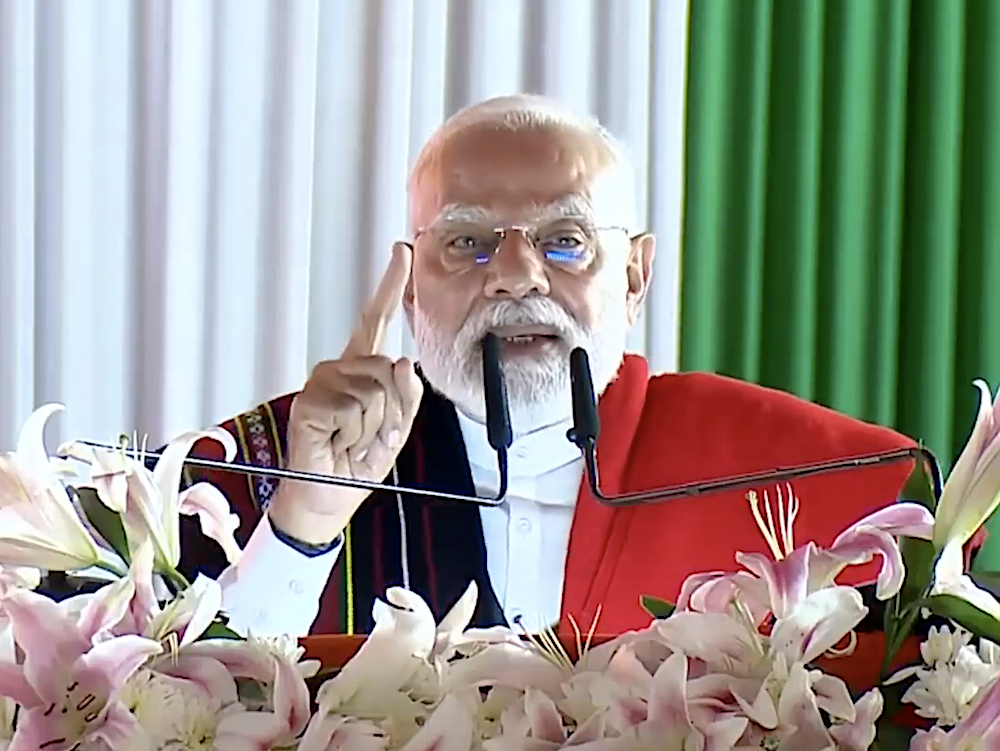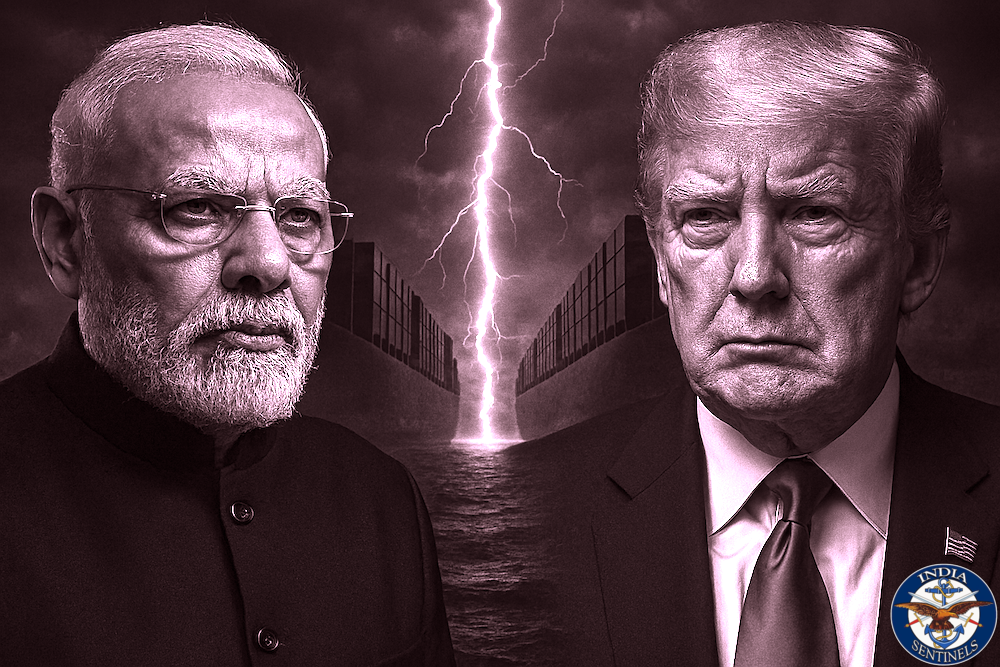 Sergio Gor.
Sergio Gor.
The appointment of 38-year-old Sergio Gor as both US ambassador to India and special envoy for South and Central Asian affairs marks a watershed moment in India-US relations – and not necessarily for the better. As someone who has witnessed the evolution of this partnership from the trenches of military diplomacy to the corridors of strategic analysis, this author finds himself deeply concerned about the implications of this unprecedented dual appointment.
For the first time in the history of India-US diplomatic relations, Washington has chosen to hyphenate India with Pakistan through administrative sleight of hand. What New Delhi successfully resisted during the Obama administration – the inclusion of India in Richard Holbrooke’s AfPak mandate – has now been resurrected under the guise of a bilateral ambassadorial appointment.
Read also: Amnesia vs Engagement – A soldier’s view on India’s China dilemma
The Gor Enigma
Sergio Gor, born Sergey Gorokhovsky in Tashkent in 1986, embodies the complex geopolitical currents of our times. His family’s journey from Soviet Uzbekistan to Malta in 1994 – where his mother, an Israeli citizen, reportedly established a business with Israeli assistance before settling in Cospicua – then to Los Angeles, before his ascent to the inner circle of the US president, Donald Trump, reads like a Cold War thriller adapted for the social media age.
What troubles this author most is not his Soviet birth or Israeli connection – many distinguished Americans trace their roots to the former USSR with deep links to Tel Aviv – but rather his complete lack of diplomatic experience or regional expertise. Gor’s credentials rest entirely on political loyalty and his role as Trump’s chief gatekeeper for federal appointments.
His family’s Israeli connections add another layer of complexity to his appointment. Given Israel’s strategic imperatives in the region and its historical concerns about Iran, there are legitimate questions about whether Gor might attempt to undermine India’s longstanding strategic partnerships, particularly our historic ties with Tehran. India’s relationship with Iran spans millennia and encompasses energy cooperation, the Chabahar port project, and shared interests in Afghanistan’s stability – relationships that cannot be sacrificed on the altar of American or Israeli strategic preferences.
His confrontation with Elon Musk [archived link], where he successfully blocked the tech mogul’s preferred candidate for Nasa administrator, demonstrates his willingness to challenge powerful figures when Trump’s agenda is at stake. For India, this suggests an envoy who will prioritize presidential directives over nuanced diplomatic engagement.
The man’s background in political theatrics – including his 2008 stunt of dressing as a squirrel [archived link] to mock Barack Obama – hardly inspires confidence in his ability to navigate the sophisticated strategic partnership that India and America have painstakingly built over two decades.
Read also: India’s Eastern Front – New battleground that could eclipse Pakistan
Hyphenation Trap Revisited
The appointment resurrects the very construct that India fought against during the early Obama years. Former foreign secretary Kanwal Sibal’s assessment [archived link] rings true: “This is a new form of hyphenating India and Pakistan.”
The Holbrooke precedent looms large in our diplomatic memory. When Richard Holbrooke was appointed the special representative for Afghanistan and Pakistan in 2009, there was initial speculation about including India in his mandate. The UPA government’s successful campaign to exclude India from Holbrooke’s brief represented a significant diplomatic victory.
Holbrooke himself was eventually forced to clarify: “I am not an envoy and I’m not working on India-Pakistan relations.” That forced retreat by one of America’s most experienced diplomats demonstrated India’s growing leverage and the success of our de-hyphenation strategy.
Now Trump has achieved through administrative manoeuvring what Holbrooke could not accomplish through direct assignment. By giving the ambassador himself a regional brief, the administration has made formal Indian objection more difficult while achieving the same substantive outcome.
Read also: Devil’s Triangle: India’s strategic nightmare that could choke northeast
The Pakistan Move
Gor’s appointment must be viewed alongside Trump’s dramatic outreach to Pakistan, most notably his hosting of the country’s army chief, Field Marshal Asim Munir, for a private White House lunch – the first time a US president has met Pakistan’s military chief without senior civilian officials present.
Trump’s subsequent statements reveal his strategic calculus: “I love Pakistan ... I think we are going to have a trade deal with Modi ... but I stopped a war between Pakistan and India.” This triangular approach suggests a transactional foreign policy that views South Asia through the lens of immediate American interests rather than long-term partnership.
The timing is particularly telling given Pakistan’s geographical proximity to Iran, where regional tensions continue to simmer. Pakistan’s 1,000-kilometre border with Iran makes it strategically valuable for any American engagement in the region.
As a former military officer who has served on the western front, this author understands the strategic imperatives that drive such calculations. However, the apparent coordination between Trump and Pakistani military leadership, evidenced by Munir’s call for Trump to receive the Nobel peace prize, suggests a dynamic that bypasses traditional diplomatic channels.
Read also: China’s Brahmaputra Gambit – A strategic assessment of Motuo dam
Economic Coercion and Strategic Autonomy
Trump’s imposition of 50% tariffs on Indian goods – the highest faced by any major US trading partner – represents a fundamental shift from partnership to coercion. The linkage between tariffs and geopolitical compliance is explicit in Trump’s approach: “You guys want to do trade? We’re not doing any trade if you keep fighting.”
This economic warfare unfolds against the backdrop of India’s continued energy relationship with Russia. While our oil imports from Russia have declined sharply – from 1.18 million barrels per day to 400,000 barrels per day by August 2025 – this appears driven more by EU sanctions on refiners than American pressure.
The selective targeting of India while the EU, China, and Turkey maintain similar relationships with Russia reinforces perceptions of discriminatory treatment. This approach fundamentally misunderstands India’s strategic culture and our commitment to strategic autonomy.
Read also: Network-Centric Warfare – Pakistan’s edge and India’s wake-up call
Government’s Calculated Silence
The external affairs minister S Jaishankar’s terse response – “I have read about it” – followed by his refusal to elaborate, represents a masterclass in diplomatic non-engagement. This calculated silence speaks volumes about New Delhi’s assessment of the appointment.
The “deafening silence” from the government of Prime Minister Narendra Modi reflects not indecision but strategic patience. Our leadership understands that premature reactions to provocative appointments can limit future diplomatic manoeuvring space.
However, this silence should not be mistaken for acceptance. India’s strategic community has expressed deep scepticism, with many questioning whether Gor’s dual mandate was even discussed with New Delhi beforehand.
Read also: Beijing cannot dictate the Dalai Lama’s reincarnation
Nukes and Credibility Gaps
Trump’s persistent claims of preventing nuclear war between India and Pakistan have become increasingly problematic. His latest iteration – claiming “seven jets were shot down” during the Balakot crisis – differs from earlier versions where he claimed “five” aircraft were downed.
As someone familiar with the operational details of that engagement, this author can attest that these shifting narratives bear little resemblance to ground realities. Such cavalier treatment of sensitive military operations undermines American credibility and irritates Indian officials who value precision in strategic discourse.
The Pakistani army chief’s endorsement of Trump’s “peace-making” efforts only reinforces Indian concerns about emerging US-Pakistan coordination that bypasses established diplomatic protocols.
Read also: Israel-Iran War – Tel Aviv’s tactical win, Tehran’s strategic advantage
History Lessons
The current trajectory bears uncomfortable parallels to earlier periods when American policy treated India and Pakistan as equivalent entities requiring external mediation. The Cold War pattern, where the US supported Pakistan militarily while viewing India with suspicion, created deep mistrust that took decades to overcome.
The post-9/11 period saw gradual American recognition of India as a distinct strategic partner, culminating in the civil nuclear deal and our elevation within the Indo-Pacific framework. Trump’s approach suggests a reversion to earlier patterns where South Asia is viewed through tactical rather than strategic lenses.
This historical context is crucial for understanding why the current approach is so problematic. India is not seeking American validation or mediation – we are seeking partnership based on mutual respect and shared interests.
Read also: With FM Munir in Pakistan’s charge, India must see the ‘black swan’ coming
Institutional Implications
Gor’s appointment also reflects Trump’s broader pattern of bypassing traditional diplomatic institutions. The choice of a political operative with no diplomatic experience for such a crucial posting signals preference for personal loyalty over institutional expertise.
This approach particularly concerns Indian officials who have invested decades in building institutional relationships across the US government. The potential marginalization of career diplomats and regional experts could undermine the sophisticated bilateral engagement that has characterized recent Indo-US relations.
From a military perspective, institutional continuity matters enormously in defence cooperation. Our armed forces have built deep relationships with Pentagon officials and regional commanders. Political appointees with limited understanding of military culture and strategic imperatives could disrupt these carefully cultivated ties.
Read also: India mustn’t take Pakistan COAS’s promotion to field marshal lightly
Strategic Recommendations
Despite these concerns, India must extract maximum value from this challenging situation. Gor’s appointment, while problematic in conception, offers several strategic opportunities.
However, we must remain vigilant against any attempts to manipulate our bilateral relationship to serve third-party interests. Given Gor’s family background and potential loyalties, India must ensure that our longstanding partnerships – particularly with nations like Iran, Russia, and others in our extended neighbourhood – are not undermined through diplomatic pressure or economic coercion channelled through the US embassy.
First, his position as Trump’s trusted operative means he has direct access to presidential decision-making. If properly engaged, Gor could become a valuable channel for communicating Indian perspectives directly to Trump, bypassing the bureaucratic layers that often dilute strategic messages.
Second, the dual mandate, while diplomatically objectionable, positions our ambassador-designate at the centre of American policy formulation for the entire region. This could provide India with unprecedented insight into American strategic thinking across South and Central Asia.
Third, Gor’s political background means he understands power dynamics and transactional relationships. India’s approach should emphasize our growing strategic value rather than dwelling on diplomatic protocol violations.
Read also: How India should respond to China’s activities around Taiwan
Strengthening Strategic Autonomy
More fundamentally, this appointment should serve as a wake-up call for India to strengthen our strategic autonomy frameworks. We cannot afford to remain dependent on any single partner, regardless of the relationship’s historical trajectory.
Our energy diversification efforts must accelerate. While Russian oil imports have declined, we must ensure this reduction stems from strategic choice rather than external pressure. Simultaneously, we should expand partnerships with Middle Eastern producers, African suppliers, and American shale exporters to create a truly diversified energy portfolio.
Defence cooperation requires similar diversification. While our partnership with America in advanced technologies remains valuable, we must ensure that Russian, French, Israeli, and indigenous capabilities provide viable alternatives. The Atmanirbhar Bharat initiative becomes even more critical in this context.
Economic resilience demands strengthening our domestic market while expanding trade partnerships beyond traditional allies. The recent free-trade agreements with Australia and the United Arab Emirates, along with ongoing negotiations with the United Kingdom and the European Union, demonstrate the right approach.
Read also: Threat of China annexing Tawang is real. What must India do?
Diplomatic Recalibration
India’s diplomatic strategy must evolve to address this new reality. We should engage Gor professionally while making clear our expectations for the relationship. This means:
Establishing clear red lines on issues where Indian interests are non-negotiable, particularly regarding our strategic autonomy and regional partnerships.
Creating multiple channels of engagement to ensure that bilateral relations do not become hostage to any single individual’s understanding or preferences.
Strengthening our public diplomacy efforts in America to build broader understanding of Indian perspectives beyond government-to-government channels.
Enhancing coordination with like-minded partners – Japan, Australia, France, and others – who share our concerns about transactional approaches to strategic partnerships.
Read also: India @ 75 – New Delhi’s security challenges and path forward
The China Factor
Crucially, we must not lose sight of the larger strategic context. Despite tactical disagreements over trade and regional policy, both India and America share fundamental concerns about China’s rise and assertive behaviour.
Gor’s appointment, while problematic, does not alter the basic strategic equation that makes Indo-US partnership valuable for both sides. China’s growing military capabilities, its assertiveness in the South China Sea and along our northern borders, and its challenge to the existing international order create shared interests that transcend individual appointments.
Our approach should emphasize these enduring strategic convergences while addressing tactical disagreements through patient diplomacy.
Read also: Understanding Pakistan’s ‘deep state’ and its threat to world
Military-to-Military Ties
From this author’s experience in military diplomacy, the defence relationship often proves more resilient than political fluctuations suggest. Our armed forces have built deep professional relationships with their American counterparts through joint exercises, training exchanges, and technology cooperation.
These military-to-military ties should be strengthened and insulated from political turbulence. Regular exchanges at the service chief level, expanded training cooperation, and joint development of niche technologies can create stakeholders in the relationship that transcend individual political appointments.
The recent agreement on jet engine technology and ongoing discussions about advanced drone systems demonstrate the potential for defence cooperation to anchor the broader relationship.
Read also: India must move earnestly and quickly to settle border dispute with China
Looking Ahead
Sergio Gor’s appointment represents both challenge and opportunity for India. The challenge lies in managing a relationship with an administration that views strategic partnerships through transactional lenses. The opportunity lies in demonstrating that India’s value as a partner extends far beyond immediate tactical calculations.
We must approach this engagement with confidence in our strategic worth, while remaining realistic about American limitations and priorities. Today, India is not the economically struggling, militarily weak nation that once sought American validation. We are a rising power with our own interests, capabilities, and global responsibilities.
The coming months will test both Gor’s diplomatic learning curve and India’s strategic patience. Success will require careful calibration of engagement levels, clear communication of Indian priorities, and persistent focus on long-term strategic interests over short-term tactical advantages.
Trump’s approach may represent a temporary deviation from the strategic partnership trajectory rather than a permanent shift. However, India cannot afford to wait passively for American policy to return to previous patterns. We must use this period to strengthen our strategic autonomy, diversify our partnerships, and demonstrate that India’s friendship must be earned through mutual respect rather than demanded through economic pressure.
Read also: Afghanistan 4.0 – Old battlefield, new alignments and India’s expected role
The hyphenation trap that Gor’s appointment represents is real, but it is not insurmountable. India has successfully navigated more challenging diplomatic terrain during the Cold War when both superpowers sought to drag us into their respective camps – and after the crippling US-led western sanctions imposed on us following our 1998 nuclear tests. Our success then, as now, will depend on clear thinking, patient diplomacy, and unwavering commitment to our national interests.
The appointment of Sergio Gor may not be what India wanted, but it is the reality we must address. How we handle this challenge will determine not just the future of India-US relations but also our credibility as a strategic power capable of defending our interests while building mutually beneficial partnerships.
The test of great nations lies not in avoiding difficult situations but in turning challenges into opportunities. India must rise to meet this test with wisdom, patience, and steadfast commitment to our strategic autonomy. The stakes could not be higher for our future as a great power in a multipolar world.
Disclaimer: The views expressed in the article are the author’s own and don’t necessarily reflect the views of India Sentinels.
Follow us on social media for quick updates, new photos, videos, and more.
X: https://twitter.com/indiasentinels
Facebook: https://facebook.com/indiasentinels
Instagram: https://instagram.com/indiasentinels
YouTube: https://youtube.com/indiasentinels
© India Sentinels 2025-26

